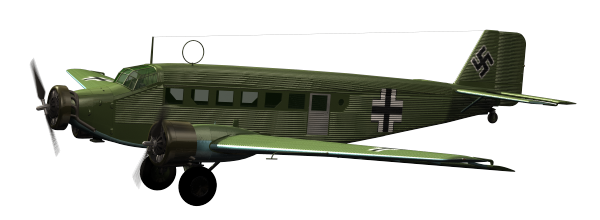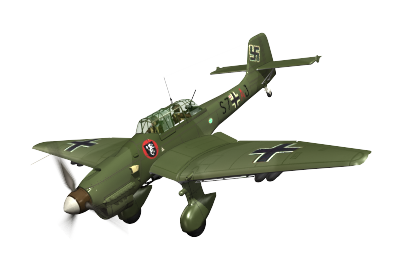The Second World War - Battle Of France Fall Gelb Case Yellow Timeline - World War Two - Battle Of France
Phase one - The Battle for Northern France and the Low Countries
The German Plan - Fall Gelb - Case Yellow
Fall Gelb (Case Yellow), the plan for the first phase of the offensive against France, went through several incarnations. Initially it called for a maneuver very similar to the Schlieffen plan of World War One; mainly an infantry attack supported by armour that was expected to consume a vast amount of manpower and war material. Germany couldn't afford it and Hitler didn't like it.
An alternative plan, devised by General Erich von Manstein and General Heinz Guderian, concentrated the majority of the armoured force to punch a hole through the middle of the Allied line around Sedan. The mobile armoured divisions would then exploit the gap by driving rapidly to the English Channel, cutting off the Allied armies in the low countries. The Allies would first be drawn into the Low Countries by a diversionary attack into Holland and Belgium by mainly infantry divisions. Another force would cover the French Maginot line to keep Allied troops there occupied.
The Allied Dyle-Breda Plan
The French plan was based on Germany repeating the Schlieffen Plan of 25 years earlier. Gamelin, the French commander, put his best troops in the North to oppose the expected German drive through Holland and Belgium. On the left flank was the strong Seventh Army, next in line was the British Expeditionary Force (BEF), then the French First Army and finally from Sedan to the Maginot line was the relatively weak Second Army.
The area to the north east of Sedan was the Ardennes forest, terrain considered unsuitable for armoured vehicles. It was defended by relatively few troops, most units of which were not of a highest standard. It was thought that should the attack come here then, because of the unsuitable terrain, it would be slow to build up, giving time to re-enforce the line.

German Ju52 - used to drop Fallschrimjager by parachute
and to supply rapid
moving front line troops.
War Machines of World War Two in 3d
Opening Moves
British Premier Neville Chamberlain resigned on May 9. Winston Churchill assumed the vacant British premiership on 10 May. The Germans executed Fall Gelb early that same morning when elements of the German 1st and 2nd Fallschrimjager regiments were dropped by parachute into Holland to seize bridges necessary for the rapid advance of the German Army group B into the low countries. Other elements of the 1st Fallschrimjager regiment landed by glider onto the modern Belgian fort of Eben Emael to secure the crossing of the Meuse river necessary to give the Germans access to the south. The seizure of the Dutch bridges was not that successful, but the daring assault on Eben Emael was an outstanding success despite some initial problems.
Army Group B advanced towards Brussels and Antwerp. The Allies unknowingly complied with the German plan and advanced north to the Dyle line to block Army Group B. Army Group A meanwhile advanced through the Ardennes towards the Meuse between Sedan and Dinant. On May 13 Guderian and Rommel crossed the Meuse and established bridgeheads across the river. On May 14 French divisions made unsuccessful counter attacks but by May 15 the Germans had broken out of their bridgeheads.
Exploitation
Once the Meuse had been crossed the German Panzer forces took advantage of the lack of defense in depth. Guderian ordered 1st and 2nd Panzer divisions to attack west from Sedan whilst 10th Panzer held the southern flank against French counter attack. Rommel at Dinant likewise broke out west towards the coast. The Allies struggled with poor communications and tactics against the rapidly moving German mobile units. On May 20 elements of Guderian's 2nd Panzer division had reached the sea, cutting off the Allied armies in the north.
Counter attack
The French and British made unsuccessful attempts at attacking the flanks of the expanding German armoured corridor at Arras, Amiens, Cambrai and Abbeville, convincing Gort his only option was to save the BEF. On May 23 Gort had been without orders for several days and ordered a withdrawal to Dunkirk.
The Channel Ports
The allies decided to hold Boulogne and Calais in an effort to slow the German advance down. The Welsh Guards and Irish Guards and French troops defended Boulogne until May 23 when the British evacuated as many as possible. Calais, defended by the Rifle Brigade and French troops, held out until May 26.
Dunkirk
On May 24 the German High Command issued an order halting the advance at the Aa canal. It was the intention that the Luftwaffe be given the task of finishing off the BEF and French First army at Dunkirk. This gave the Allies time to establish a defensive perimeter around Dunkirk. The evacuation began during the evening of May 26. The evacuation continued until June 4 by which time a total of just over 338,000 men of the BEF and French First Army had been rescued.
Fall Rot - Case Red
Once Dunkirk had fallen the German High Command implemented Fall Rot, the plan to complete the destruction of the remaining French forces in the south. By this time Gamelin had been replaced by General Weygand, who formulated a plan to defend fortified pockets in depth, known as hedgehogs, to slow the German advance down. The plan, denied the first rate divisions that had been lost in the north, had limited chances of success but nevertheless the French put up a fierce resistance.
The Germans opened the offensive on May 5. The Luftwaffe played an important role in the attacks by eliminating strongpoints and denying the French the opportunity to concentrate their forces. On June 10 German forces made a breakthrough near Abbeville; that same day Paris was declared an open city.

The Ju87 Stuka dive bomber was 'artillery on demand'. Units were allocated to support the ground troops, overcoming strong points of resistance.
On June 16 French Prime Minister Paul Reynaud resigned. Marshal Philippe Pétain succeeded him and began moves for an armistice. The Armistice was signed on June 22; on June 25 it went into effect, ending the Battle of France.
Timeline 1940
May 10
German troops begin crossing the Luxemburg, Belgian and Dutch frontiers at 04:30.
Von Bock's Army Group B advance towards Antwerp and Brussels. Von Rundstedt's Army Group A advance towards a line between Dinant and Sedan on the Meuse.
From dawn the Luftwaffe attack wide ranging targets in Holland, Belgium and France - airfields, cities, road and railway centers.
The Panzer divisions of Army Group A start to move through the Ardennes protected by dense fighter cover to prevent detection.
Fallschrimjager attack Dutch bridges at Rotterdam, Dordrecht, and Moerdijk, and at Maastricht and the Belgian Fort of Eben Emael. The bridges are subjected to fierce counter attacks. Eban Emael's heavy weapons are neutralized.
French General Gamelin orders the Dyle-Breda plan to be executed to oppose the German offensive; positioning six allied armies in a line from the end of the Maginot line on the Luxemburg frontier, along the Rivers Semois and Meuse north to the River Dyle and on from Antwerp to Breda near the Maas estuary.
RAF Fairey Battle bombers attack German columns loosing 13 aircraft out of 32, the rest being damaged.
Chaotic fighting occurs around the Semois river in the Ardennes between Huntziger's 2nd Army and Guderian's XIX Panzer Corps.
Luxemburg surrenders.
May 11
German ground troops arrive at Eban Emael and force the garrison to surrender.
Seven out of eight RAF Fairey Battle bombers are lost attacking German columns.
May 12
The RAF suffers significant casualties: 7 out of 9 Blenheim bombers are lost attacking German columns between Maastricht and Tongres; 4 out of 5 Fairey Battle bombers are lost attacking bridges over the Albert Canal; 10 Blenheim bombers out of 24 are shot down attacking targets in Maastricht.
Two French armoured divisions successfully hold of Army Group B in the largest tank battle of the campaign at Hannut; giving the French First Army time to prepare defenses at the Gembloux Gap, 21 miles to the west of Hannut.
May 13
7th Panzer Division, commanded by Erwin Rommel, crosses the Meuse at Dinant.
XIX Panzer Corps, commanded by Heinz Guderian, crosses the Meuse at Sedan.
Dutch Queen Wilhelmina escapes from the Netherlands and takes refuge in Britain.
May 14
The Dutch begin negotiations for a ceasefire.
Rotterdam is attacked at 14:00 by the Luftwaffe killing 900 and razing the city center to the ground.
The RAF loose 40 bombers out of 63 attempting to attack the German bridgeheads over the Meuse.
The German Sixth Army of Army Group B headed by Hoepner's XVI Corps engaged French First Army at Gembloux. The Germans succeed in their objective of pinning down First Army but fail to destroy it as planned.
French counter-attacks at the Meuse bridgeheads are slow to materialize and fail to contain the Germans.
Huntziger pulls back south, thinking the German intention is to outflank the Maginot line and roll it up, and creates a gap through which Guderian's XIX Panzer Corps attacks west.
Holland surrenders in the evening.
May 15
The Dutch King arrives in Britain.
Rommel orders 7th Panzer Division to move to Cerfontaine eight miles west of Phillipeville and runs headlong into French 1st Armoured Division. 7th Panzer engages the French at close range and then moves on leaving 5th Panzer to finish the job. The French 1st Armoured Division are left with 17 serviceable tanks the next day.
Guderian breaks out of Sedan with 1st and 2nd Panzer Divisions leaving 10th Panzer and the Grossdeutschland Regiment to protect his southern flank.
A French counter attack late in the day is held by10th Panzer Division and Grossdeutschland Regiment after fierce fighting.
General Corap is replaced by General Giraud as commander of the French Ninth Army.
May 16
French divisions are scattered and finding it difficult to form a coherent defense against the rapidly advancing German mobile units.
Guderian approaches Montcornet.
Rommel halts at Le Cateau having advanced 50 miles in one day.
May 17
German High Command orders Guderian to halt his advance. A reconnaissance in force is allowed after Guderian threatens to resign.
Charles de Gaulle attacks around Montcornet with 3 battalions of tanks of the newly forming French 4th Armoured Division to gain time for a defensive line to be formed blocking the route to Paris. The attack peters out due to lack of petrol and infantry support.
May 18
Guderian given the order to move once more.
Rommel takes Cambrai.
The French continue to form a defensive line on the River Aisne to protect Paris from the expected drive south by German forces. Only two British Territorial divisions, the 12th and 23rd, now lie between the Germans and the sea.
May 19
General Giraud, commander of the French Ninth Army, is captured.
Allied attempts at movement are hampered by an exodus of refugees trying to escape the Panzers.
Charles De Gaulle attacks towards Crecy aiming at Guderian's flank. The attack is expected by Guderian, who has organised his anti-tank guns in a defensive line that repulses the French armour inflicting serious casualties.
The Panzers are 50 miles from the sea.
Gort advises the British War Office to consider evacuating the BEF. Operation 'Dynamo' is conceived to cover the possibility.
General Gamelin is replaced by General Weygand as overall commander of the Allied forces.
May 20
2nd Panzer Division reaches sea at Noyelles;
Amiens is defended by the Royal Sussex Regiment to the end.
May 21
BEF attack 7th Panzer Division and Grossdeutschland Regiment at Arras. The British armour makes a big impression on the German troops but the success cannot be exploited due to lack of infantry. The BEF withdraw and Gort becomes convinced that the BEF must retire to Dunkirk.
May 22
Guderian's Panzer Divisions move to take the Channel ports.
2nd Panzer moves to invest Boulogne defended by the Irish and Welsh Guards
1st Panzer Division and Grossdeutschland regiment moves to invest Calais defended by the Rifle Brigade. 10th Panzer replaces 1st Panzer overnight allowing 1st Panzer to be directed towards Dunkirk.
French, under Altmayer, attack south towards Cambrai but are halted.
May 23
Gort, without any orders for several days, decides to save the BEF.
Boulogne falls.
May 24
German High Command issues an order to halt the advance at the Aa canal. The BEF at Dunkirk is to be finished off by the Luftwaffe. Goering has convinced Hitler this is possible and Von Rundstedt wants to take the opportunity to rest and refit the Panzer divisions ready for the expected move south into France.
May 25
Gort moves 5th and 50th Divisions from Arras to the North to strengthen the line in anticipation of the Belgian army collapsing after coming under intense pressure from the Germans.
May 26
Operation Dynamo is started.
Calais falls.
Hitler rescinds his 'Halt' order.
May 27
French attack from the south towards Amiens, it makes some progress but is halted and driven back
May 28
Belgium surrenders.
French under De Gaulle attack from the south towards Abbeville.
May 29
De Gaulle's attack stalls and he withdraws.
Guderian's XIX Panzer Corps and 7th Panzer Division withdrawn from the attack on Dunkirk to refit in preparation for Fall Rot.
June 4
Last ship leaves Dunkirk. Operation Dynamo officially concluded.
June 5
Case Red - German Offensive south begins.
June 14
Paris is taken.
June 22
Armistice signed.
June 25
Ceasefire - Battle of France is over.
